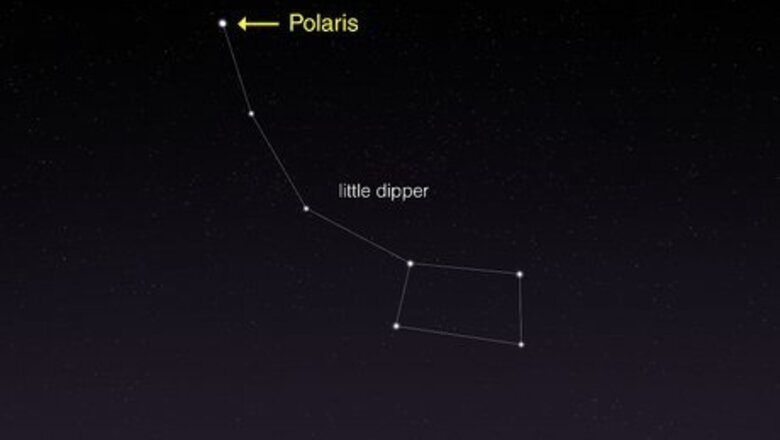
views
- In the Northern Hemisphere, find Polaris or the North Star in the tip of the Little Dipper’s Handle. This points to true north.
- In the Southern Hemisphere, locate the Southern Cross and follow the 2 brightest stars down to the horizon to find south.
- Locate east or west by finding the rightmost star in Orion’s belt, which rises and sets within a degree of true east or west.
Finding True North in the Northern Hemisphere
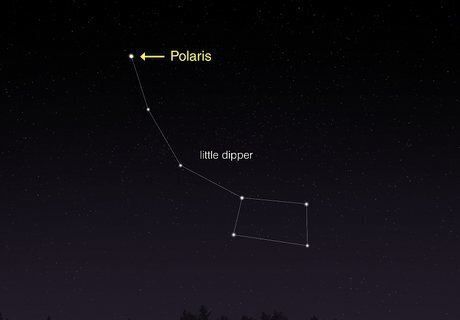
Locate Polaris, the North Star. Polaris is the brightest star in the constellation Ursa Minor, also known as the Little Bear or Little Dipper. The North Star is the tip of the Little Dipper’s handle, or the tail of the Little Bear. Finding Polaris is important to star navigation because it remains almost in the same spot all night. The star is called Polaris because it appears within a degree of the Celestial North Pole and therefore appears to not move in the night sky. In Greek mythology, Zeus rewarded two bears with a home in the stars of the night sky. When he threw them up there, he swung them by their tails, which elongated and formed the Ursa Minor constellation. Today, most people refer to Ursa Minor as the Little Dipper instead of the Little Bear because the seven stars that make up the constellation look like a small water dipper.
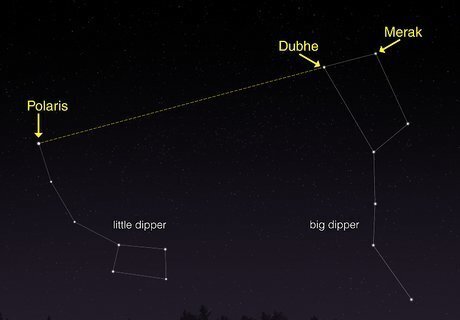
Use pointer stars in the Big Dipper to find Polaris and True North. Although Polaris is visible in the northern sky at most locations north of the equator, it can be hard to spot if you don’t know exactly what you’re looking for. Instead, locate the Big Dipper and find Merak and Dubhe, the two stars on the edge of the Big Dipper opposite its handle. Follow these stars toward the Big Dipper’s mouth to find Polaris. If you go 5 times the Merak-Dubhe distance away from Dubhe, you’ll be within 3 degrees of Polaris. If Polaris is clouded over, you still know where it is.
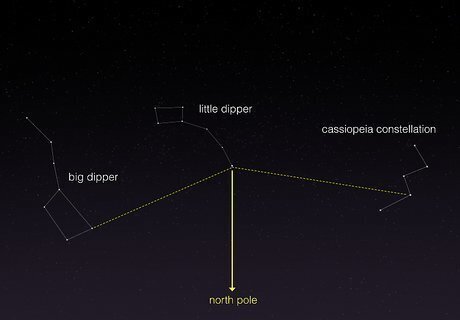
Locate the Cassiopeia constellation. Depending on your position, Cassiopeia appears as an “M” or a “W” in the sky. While Polaris is located at the North Celestial Pole, Cassiopeia is at the South Celestial Pole. Connect these two points to find true north. When the Big Dipper is below the horizon, find the Great Square of the Pegasus constellation. Measure the distance from the star Alpheratz (visually a part of Pegasus but actually a part of Andromeda), to Caph, the star at the rightmost edge of Cassiopeia (W-shaped). In line with the 2 stars, measure another of these distances. You’ll then be less than 3 degrees from Polaris, even if you can’t physically see it.
Finding South in the Northern Hemisphere
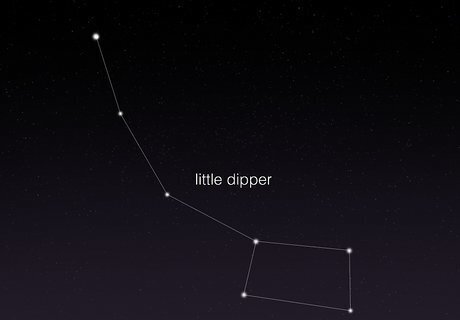
Locate Ursa Minor. Known as the Little Dipper or the Little Bear, this constellation resembles a small ladle with 2 stars at the end of the handle. Locate the Little Dipper, then find the star at the tip of the handle and draw an imaginary line from the star down to the horizon. The point where the line meets the horizon is south.
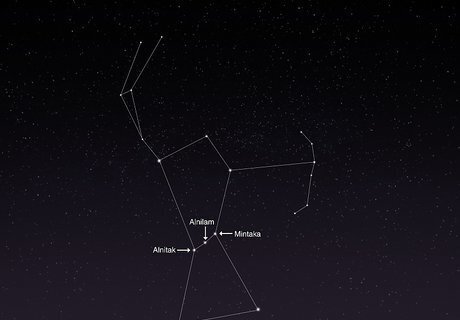
Find the Orion constellation. Orion, or the Hunter, resembles a bent hourglass with stars making up Orion’s shoulders, knees, and belt. Find Alnilam, the middle star in Orion’s belt, and look for one moderately bright, one dim, and one fuzzy star hanging down from the belt. These represent Orion’s sword, which points south. The stars Betelgeuse and Bellatrix represent Orion’s shoulders, and the stars Saiph and Rigel represent the knees or feet. Orion’s belt consists of 3 stars: Alnitak, Alnilam, and Mintaka. In the Northern Hemisphere, Orion is visible chiefly in the winter and early spring but can be seen late at night in the fall or before sunrise in the summer. The fuzzy “star” in Orion’s sword is actually the Great Nebula of Orion, an interstellar nursery where new stars are being formed.
Using Any Star’s Position to Navigate
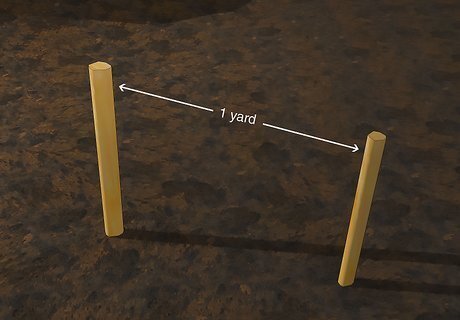
Drive 2 stakes into the ground. The stakes should be about 1 yard (91 cm) apart. Then, tie a piece of string between them.
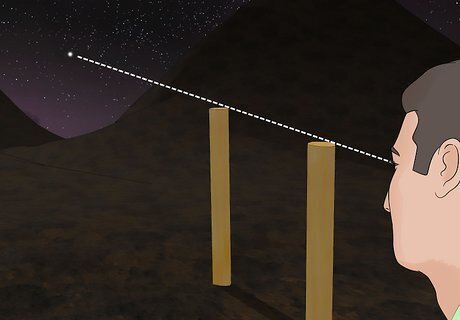
Select any star you see in the night sky. While any star will work, it’s best to choose one that’s bright and easily visible. Then, line the star up with the tops of both stakes.
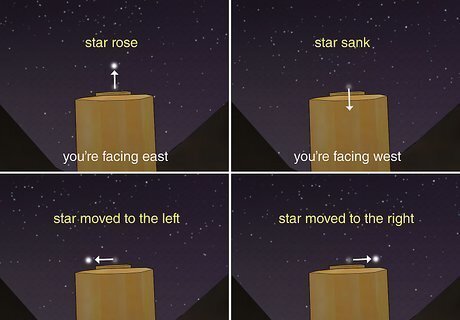
Wait for the stars to move out of position with the stakes. Earth’s rotation from west to east causes the stars in the sky, as a whole, to rotate from east to west. The direction the star has moved in respect to its original position tells you which direction you’re facing. If the star rose, you’re facing east. If the star sank, you’re facing west. If the star moved to the left, you’re facing north. If the star moved to the right, you’re facing south.


















Comments
0 comment